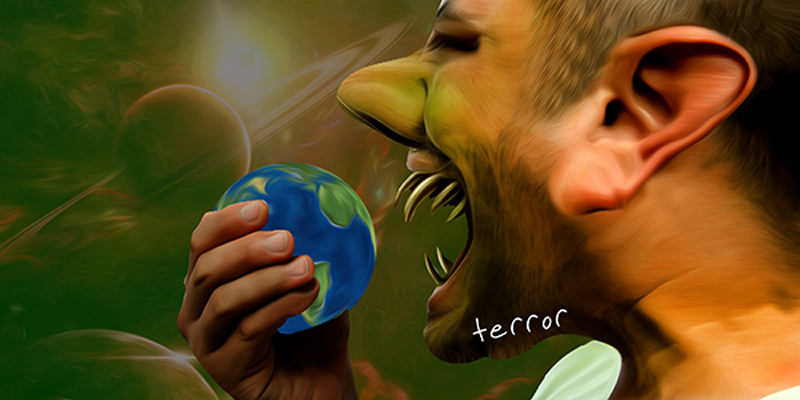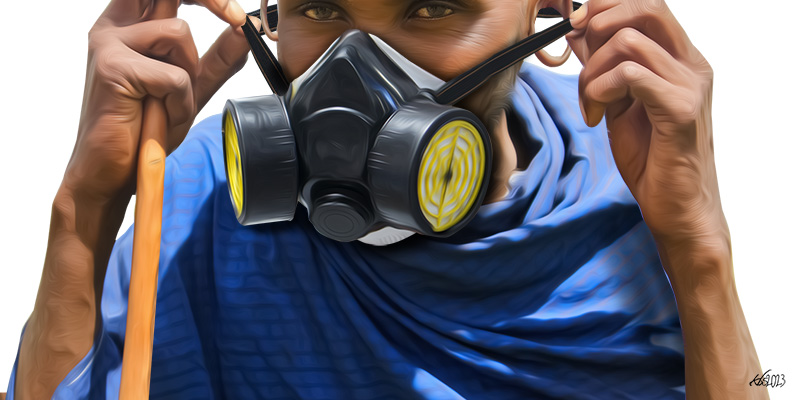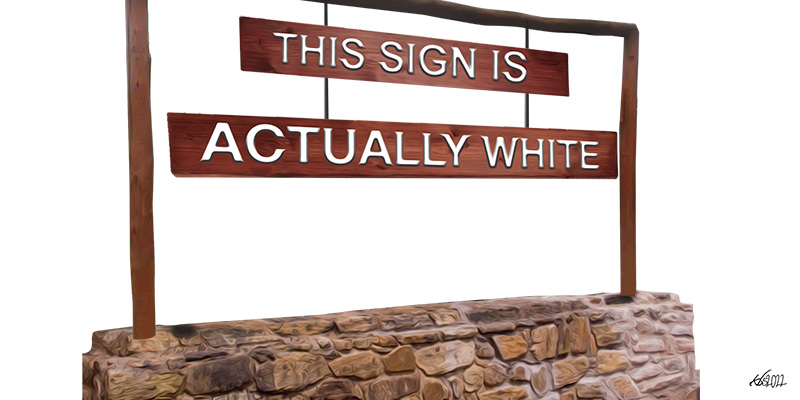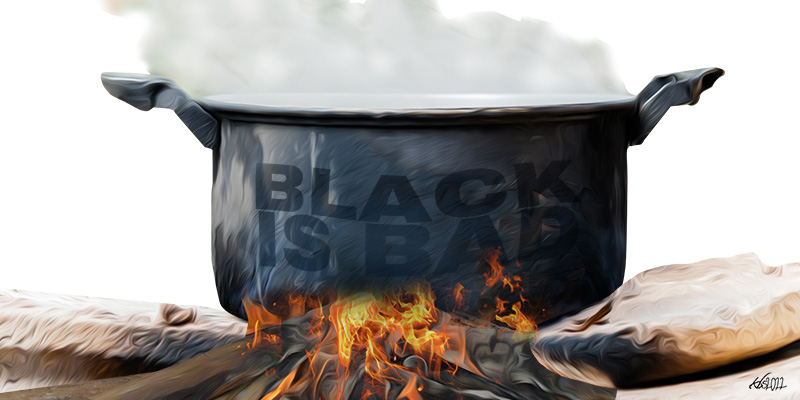“Who the f**k are you, man?” Some awkwardly dressed long-haired pale kid asked out loud to a quiet bar at the appearance of six or seven of the candidates crowding the stage of one of the initial Democratic debates back in July 2019. Now, nearly seven months later, that statement, then met with tepid chuckles over 8 dollar draft beers and local artisanal fried cheese with “hand-made” aoili, rings truer than ever.
It still hangs heavy over the entirety of the Democratic Party; one that is now in a crisis of identity, and being repeatedly body punched in a fight that it does not fully understand. The question was asked in the heart of what has rapidly materialised as the singular most vital swing state in the entirety of the country; which is rapidly proving to be the mid-western state of Wisconsin (the one that looks like a mitten, north of Chicago).
The audience within that state, and one imagines, many other states, is rapidly erring on the side of indifference. In the crucial Democratic zone of Dane County in the overtly liberal capital city of Madison, Wisconsin, there have been sinfully few actual inroads towards actually doing the crucial thing – getting the base frothing at their mouths with a sense of urgency.
We now sit in the early stages of 2020, the primary for the Democratic nomination having slogged through an absolutely numbing series of pointless debates and political jabs throughout the entirety of 2019. How to sum up these last six months of “serious” presidential campaigning on the Democratic side? Quite possibly, pointless, although it is honestly nearly impossible to tell – such is the minimal impact that the last half year seems to have had in influencing the mind of the “Democratic base voter” to be inspired enough to get out and campaign, to sign up their friends, to back a candidate, to even vote.
Truly, it should have been more memorable than it was, and therein lies the problem. The Democratic Party doesn’t realise that the entire year was seemingly spent whilst laying as little infrastructure and making as few viable inroads as they possibly could. Just as the race started to become solid, as one would expect the party to come together after the posers and long shots began to drop out across the latter months of 2019 and early 2020, the problems grew bigger as the campaign grew more “serious”— highlighted in bizarre on-stage fights between two of the three arguable front-runners, Elizabeth Warren and Bernie Sanders, the former of which threw barbs at sexist sentiments; the latter whose supporters claimed vast establishment conspiracy.
We now sit in the early stages of 2020, the primary for the Democratic nomination having slogged through an absolutely numbing series of pointless debates and political jabs throughout the entirety of 2019.
Right now, key predictions are stating that there are four states that can be judged as “absolute toss-ups”: Pennsylvania, Florida, Arizona and Wisconsin.
Pennsylvania went to Donald Trump in 2016 – arguably the biggest shock of that awkwardly rolled-out night, the announcement coming shortly before John Podesta shuffled aimlessly out onto the stage in New York City to tell shattered Hilary Clinton supporters to go home, probably shortly followed by the chair of the campaign wandering home to stare into the depths of a bottle of Scotch and wonder when his failings would bite him in the ass. Pennsylvania will have blue (Democratic) money poured into it; there is next to no chance of it going for Trump again.
Florida, while it is called a toss-up, has the controversies of six political thriller novels every two years with each new election cycle. The deck has been rigged Republican in the state to ensure the suppression of votes – taking away voting rights, not allowing former prisoners to vote, or as in 2000, when all else fails, just giving shitty ballots to the states multitude of senior citizens (albeit the old liberal Jewish ones). It may be called a toss-up, but it will fall red (Republican) in the 2020 presidential ballot.
Arizona cuts the same way; consistently touted as having the potential to flip over to the liberal side of the voting trend, the state never truly arrives at voting “left”, and the same will almost definitely ring true in favour of Trump in 2020.
That leaves Wisconsin, and given the above estimates, if the predictions hold, it will put the electoral college score at a dead heat of 268-260 towards the Democratic candidate. (In this screwball American system of elections, it takes 270 to win and to the victor goes all the power.) Now it seems that the ball has rolled slowly to our feet; whether Wisconsin possesses any ability to pick it up and run with it is a drastically different story. Right now, indifference reigns supreme.
Hubris and hot air
The entire summer last year, it seemed to rain, and people seemed to get angrier every time the clouds broke long enough to melt the earth with a heat wave that would make Mombasa blush. The attitude surrounding the debates in the early and mid-stages of July wasn’t helped along by this acclimatic side effect to global warming; all of the candidates seemed to rise and fall, punching themselves out and then landing a knockout blow, only to be slapped down days later in a circular firing squad of their own demise.
Each formed their own fate and rapidly dug their grave on the small hill that they chose to die on on a separate occasion. For Warren it was continuing to address the claims of Native American heritage; for Kamala Harris, it was burrowing down the rabbit hole of staying the “most woke” as a former prosecutor in the state of California (albeit before she randomly dropped out to yawns on a Tuesday in early December); Bernie engaged and engaged on some of his former campaign staff (not him, specifically) being accused of sexism. Mayor Pete had a race relation issue as the black police chief of his city was controversially fired; Joe Biden continually tripped over his own dick at every possible turn and Amy Klobuchar kept getting slammed with terrible answers over her alleged abuse of former staffers.
Steadily there has been a stream of drop-outs across the last three months, each met with varied degrees of disdain. John Delaney dropped out on January 31st, mostly to general surprise that he’d ever been in the race at all. Cory Booker dropped out in mid-January, having thoroughly missed his shot. Just three days before him, Marianne Williamson dropped out to much disdain as the race had been much more interesting watching her have assorted drug flashbacks live in front of a studio audience. Julian Castro, considered a long shot dark horse, dropped off shortly before Williamson and promptly threw all of his swing state clout behind Elizabeth Warren, resulting in much speculation towards vice presidential angling.
Trust me, I know even reading the previous paragraph is an exercise in exhaustion. After several bruising campaign events and debates, the knock-out and reemergence of seemingly irrelevant candidates at the said debates and a continual media firestorm to navigate, no one has truly emerged as a winner; even the clear front runners are met with trepidation, doubt and the lack of real cohesion among what is passing for the “base” in the Democratic Party. It has become politics by participation – no one deserves to lose yet, let’s just hear what they think, okay?
Steadily there has been a stream of drop-outs across the last three months, each met with varied degrees of disdain.
Even as one alleged competitor (albeit one with little claim to the throne), Beto O’Rourke, dropped out of the race (to assorted shrugs of indifference), another challenger with the cache and cash to go far, Michael Bloomberg, the billionaire former mayor of New York City, has jumped into the Democratic fray. He has kicked up several weeks of bizarre ads (including a multi-million-dollar spot during the Super Bowl) and has still managed to fail to crack into the upper echelon. He has taken on the role of kingmaker, seemingly self-aware enough to know he stands little chance months into his run. He has vowed to play dirty and throw millions behind the eventual Democratic winner (assuming he is to inevitably lose). The whole affair seems to be a party held by the voters. Even typical political alliances are failing to take shape as the race progresses; no one is on anyone’s side, dogs are eating dogs.
At this point, trying to keep any rational track of the proceedings is akin to gaining your bearings in an all-out blizzard; the light at the end of the tunnel rapidly fades into a mirage.
In the meantime; Trump has continued to weather storms that would destroy anyone else: if they are ships to be sunk, he is an ugly little rock that gets battered by the hurricane and doesn’t go under the surface. It has been a summer and early fall that quite frankly came across as some kind of strange record: what that record would be categorised as is harder to pinpoint (douchiest quarter? Worst leadership month? Foreign policy fuck-ups per capita in an administration? Unforced errors in a day?)
Truly, the only way to properly see the scope of Trump’s mistakes since June of 2019 would be to sum them up in bullet form:
- He held an unprecedented military parade on the Fourth of July;
- He was booed at a baseball game in Washington DC;
- He pulled US troops out of Syria, causing the Middle East to somehow become more of a quagmire in less than 12 hours. He gave into Erdogan for apparently no reason;
- A massive scandal about Ukraine and quid pro quo broke. He admitted the scandal repeatedly. He called for investigations into those who were investigating him
- He was linked to a notorious billionaire child sex trafficker who was then arrested and who committed suicide in prison under mysterious circumstances;
- He callously mishandled the wake of major mass shootings the same weekend;
- He was found guilty of stealing from a charity to bolster his own political efforts.
These events snowballed into a much-maligned months-long impeachment show trial, which once again the Democratic powers that be fell straight into, thinking that there were more than five “rational” Republican Senators left. (There aren’t.) On January 31st, 2020, Trump was all but acquitted when the Republicans held their line, put their middle fingers up to precedent and simply refused to even hear witnesses; ostriches with their heads willingly buried.
Yet, he doesn’t seem to have lost any real ground. There is talk of impending Republican collapse, sure, but talk in American politics is the cheapest of commodities, and right now Trump has a monopoly on that market. The strategy at the White House seems to be akin to the blitzkrieg at Ardennes: at your possible weakest moment, hit hard and fast and try to drive the better organised forces into the sea before they have a chance to know what happened.
A classic counter-attack
The strategy of the Republicans is a classic counter-attack: in the face of impending disaster, send everyone into the opposition’s box to put shots on goal. Right now, it seems to be working like gangbusters. The Democratic Party has a rapidly dwindling opportunity, one that grows smaller and smaller every month. Meanwhile, there has been substantial consolidation by the right wing to influence possible battleground states.
This has always been a Democratic problem, and frankly, a Republican strength: that those on the right make awful politicians, but are utterly adept at winning in politics. It was showcased last fall when the Republican Governor of Kentucky, Matt Bevin, was handed a resounding defeat by upstart Democratic challenger, Andy Beshear, by an incredibly narrow margin. Defeat, however, may be a strong term, as Bevin is currently fighting tooth and nail to have the results nullified or even thrown out.
That race was the essence of the difference between Republicans and Democrats. Republicans are Machiavellian; they’ll do anything to get ahead and win. The Democrats seemingly have no such ability; they repeatedly roll over, giving inches and miles, throwing in the towel before eating each other for not being woke enough. It begs the question often asked in post-colonial era elections in East Africa: If you know your opposition is going to play dirty and win, what’s the point of playing the game clean?
This is a ponderous question to be sure, but with all of this “polite” conversation, political angling and snippy remarks at each other, it is one that the American left wing is currently not answering with any real teeth. As the candidates on crowded stages take their shots at each other, each trying to gain a foothold as the next Democratic star to lead “the movement” (whatever that means in this foul year), none have gained a substantial lead against the Trump political machine.
The strategy at the White House seems to be akin to the blitzkrieg at Ardennes: at your possible weakest moment, hit hard and fast and try to drive the better organised forces into the sea before they have a chance to know what happened.
On his part, Trump must be given his due, just as the devil is. He is currently leading a political machine and movement with a deft touch, despite not having the character to wield such power. Every three months or so, in an act that can only be described as masochistic, I watch the entirety of a Trump rally live on YouTube. Sober.
Yes, completely sober. The latest of these little exercises of burrowing deep into the strangeness came in October 2019 at the much-less-infamous-than-it-should-be Minneapolis rally at which Trump made hate claims against Somalis in the state of Minnesota, made extremist claims against representative Ilhan Omar, called Joe Biden’s children assorted names, publicly made weird sexual dialogue about the FBI’s role in the Russia investigation after the 2016 election, and repeatedly admitted to wrongdoing during his call with the Ukrainian president (while framing the phone call as “perfect”).
And yet, none of it is capitalised upon, no front running is found, all instincts of stepping on your political enemy when they’re down have seemingly been lost on 75 per cent of the Democratic candidates, while the ones that do “get it” can’t message their way around a free marijuana giveaway. If they have tried; it has been a pitiful effort against arguably the most flawed opponent in political history. If they were a boxer, the Democrats would have let up their opponent back up off the canvas, with their backs turned and hands raised in meaningless presumptuous triumph. So why haven’t any of the Democratic candidates stated the seemingly obvious (and court ruling-backed) truth: that Trump is a terminally criminal asshole and should be kicked to the curb.
As the candidates on crowded stages take their shots at each other, each trying to gain a foothold as the next Democratic star to lead “the movement” (whatever that means in this foul year), none have gained a substantial lead against the Trump political machine.
As drastic as the above language is, it serves a further point – that when dealing with meanness this extreme, and a political climate this drastic, all semblance of kindness and reasonableness should be thrown out the window at all possible cost. This very election seems to hold a kind of decade on the tail end of it; if Trump wins, his power will be consolidated for at least another decade.
In essence, the current election must be contextualised for the weight it truly holds for the future of the country, the region, global geopolitics, global warming and sentiments veering to the right on a global scale.
A quintessential East African election
The US presidential election of 2020 resembles Kenya’s in 1992, Uganda’s in 2011, or even Rwanda’s in 2010. The initial contrast between this year in the US and that of Kenya in 1992 lies in the stakes: Kenya had come through the autocratic era of the 1980s Moi regime and up the hill of struggle to gain multipartyism, only to have the dream shattered as Moi won controversially once again (marred by allegations of ballot box stuffing and voter intimidation) while in the Rift Valley pockets of brutal violence emerged along with the results. Similarly, in the US, Democrats’ efforts to throw out a man they deem to be a wannabe brutal dictator fall flat. Instead of the change towards a progressive future that Kenya had hoped for, the ‘90s for the nation were more of the same, even as the years of corruption steadily corroded the shilling. This could also reflect in this upcoming American election – all hope for getting back on course towards a sort of progressive political shift could slide back into another tedious decade of fear and anger.
There is further fear in the US ahead of the 2020 election of abject failings at a systematic level a la Uganda’s general election debacle of 2011. The vote pitted challenger Kizza Besigye against multi-decade ruler Yoweri Museveni, and early indicators showed that the incumbent may have vulnerabilities after sliding back on promises during his previous term and the country facing the possibility of economic turmoil. Instead, the proceedings saw rampant malfeasance, with Museveni in the end claiming a decisive victory even as local and international observers leaned heavily on the military’s intimidation of potential voters as a crucial factor in deciding the outcome.
There are similar fears in America – that minority voters will first face the struggle of getting past intimidation (some of which has been directly called for by Trump himself), and both local and foreign interference (once again directly called for with frequency by Trump) and in the end the results could be an utter foul-up. If the initial Democratic Primary Caucus election of February 3rd is any indication (in which the app used for tallying votes seemed to die due to the pressure of it all), this doesn’t uphold in the upcoming American vote running anything resembling smoothly.
In Rwanda in 2010, it seemed that the first presidential election since the nation mandated their necessity (in seven-year increments), the resulting vote seemed to be a referendum on the very future of the nation – a fruitful economic decade translated into much of the population overlooking any allegations of cracking down on anti-Kagame dissent and rumoured human rights abuses. The result? Kagame won with 93 per cent of the vote, an utter landslide and an utter rebuke to any naysayers within the country. As a result, his mandate was deepened and widened, his grip on the country, for better or worse, has been drastically legitimised. This is the fear among cynical American liberals three-quarters of a year away from the upcoming election: that much of the problem will see the band playing on with an endless stream of economic bounty- and capitalism-fueled orgies. The fear remains that the success is based on lies that both the American left and voters of Donald J. Trump simply are blind too; or perhaps even more worrying, that they’re aware of them and simply choose to ignore them.
It is exactly the same for the Republican Party. For the Trump faithful, this is a 2030 play and beyond: to make the future of the nation (and whoever America deems bombable next), economic inequality be damned and let the memory of ice caps fade away. What they fail to realise is that the temporary economic relief could give way to a much longer term disaster.
The opposition simply must wrap their heads around the situation or be left to the doldrums of irrelevancy in the corridors of power. In pop culture parlance, all of this Game of Thrones angling on the Democratic side is cute; but Trump is riding a dragon and will burn it all down. It is that brooding, constant question that many have asked prominent opposition figures: If you knew for certain that the incumbent was cheating in the election, why didn’t you cheat better?
In past elections (see Obama era), there were widespread watch parties and enthusiasm abounded amongst the “base”; there was something to galvanise there. Now, with less than a year to go, the rare battleground bar will play the political theatrics of a Democratic debate live; the atmosphere is almost too pervasively toxic. It seems as if many are afraid to even dare jump into that fray, as though the very notion of Trumpism could rear its ugly head in the form of a yelling “bro”, a drunk and disorderly patron, a disgruntled random who decides to go get his AR-15 and “finally show those libtards they should finally listen”.
Radicalised politeness
In the mid-west, especially in Wisconsin, there is a cultural norm that I once read described as “radicalised politeness” – the idea that politics shouldn’t be brought out into the light amongst decent people for debate; it could ruin an evening of Friday fish fries or (god forbid) an NFL game. From what I can tell, with the noxious fumes being spewed off over all things politic in this year 2020, the entire middle class in America is temporarily numb to it. Trump’s inherent gaucheness has goaded them into some kind of tepid silence, with lifelong pollsters desperate to gain some kind of rational grip on the polls.
The opposition simply must wrap their heads around the situation or be left to the doldrums of irrelevancy in the corridors of power. In pop culture parlance, all of this Game of Thrones angling on the Democratic side is cute; but Trump is riding a dragon and will burn it all down.
The ugly truth remains that as of right now, there isn’t a solid foothold to be found anywhere; if the ship is heading for the rocks, then the crew is squabbling over who should hold the wheel. It seems as though the honest direction of things is that Trump will maintain a grip on the White House in 2020, and that “liberal” America will try to take their last shot in 2024, probably to an even further depth of failure.
The stakes are high, but no one is there to meet them. At Thanksgiving dinner this year, in a house full of old-school union Democrats in Milwaukee, Wisconsin, the essence of the problem was crystallised. Among the eight different voters at the dinner, not one shared a favourite candidate. The struggle for a political edge in the party has become a war of attrition to which voters are shrugging their shoulders.
Trump, on his part, continues to hurl idiocy in the air. Like so many tragically flawed opponents of dictators before him, the bait is being taken. What they seem to realise is that if they don’t manage to come together, there is absolutely no telling just how far down this rabbit hole could truly go.
I like comparing politics to driving; Americans, despite all their fancy roads and cutting edge cars, die in the thousands in car accidents every year. Why? Simple – they never anticipate a potential blind spot.








